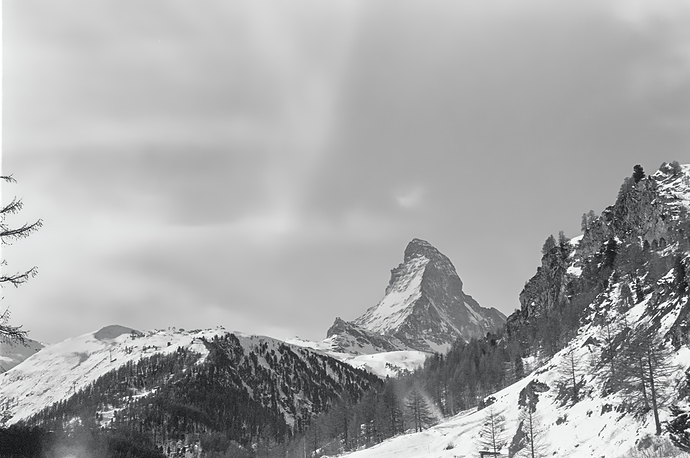@billznn OK I just opened it in Darktable and the 2526x1692 pixels are there. It must be something with my end with both Geeqie and Eye of Gnome image viewers only showing 256 × 171 pixels. My bad!
Pentax MX?
This was a very nice challenge.
grainy.reflections.dng.xmp (73.5 KB) darktable 3.1.0
We don’t get many chances to play with the negadoctor module 
Thanks for sharing!
EDIT:
Also did one without using negadoctor or invert module:
dt302.grainy.reflections…xmp (55.6 KB) darktable 3.0.2
Just had a look at your xmp: Very nice approach and no negadoctor to be seen. Have to remember that you can flip stuff like that using the curve module’s. Rather obvious, but that’s hindsight at work, right .
Anyway nice!
Almost…  Less pro.
Less pro.
Yeah, it’s also my favorite approach.
By the way, @Jade_NL, I can’t open your xmp, what version of darktable do you have? I have 3.0.2 in Ubuntu 18.04, installed from OBS repo.
EDIT: I’ve seen now that you actually wrote down the version, sorry 
Had to use the development version. The moment I noticed that this was an actual negative I wanted to use Aurélien negadoctor module, which isn’t part of stable just yet.
I am going to do another edit using the one of the curve modules instead of negadoctor.
Pentax ME Super ?
Pentax K1000!
There you are!
So, as promised…
11.dng (25.3 MB)
Of course, licensed under a ![]() .
.
My version of it can be alredy found on my website.
Your second one with an old postcard vibe:
dt302.grainy.II.negative.11.dng.xmp (22.9 KB) darktable 3.0.2
Darktable
11.dng.xmp (9.7 KB)
Rawtherapee + Photoflow
exported neutral from rawtherapee with only an exposure boost
11.dng.pp3 (12.5 KB)
In photoflow I’ve used the G’mic interpreter for the negative inversion like it was recommended in one cineon pdf
http://www.dotcsw.com/doc/cineon2.pdf
negative->density-> log exposure-> linear rgb
-fill i=(i/255);density=log(1/i)/log(10);log_exposure=(density/0.6)-(685/1023*2.048/0.6);(10^log_exposure)*255
11.dng.pfi (21.6 KB)
Blue filter in Gimp
I never hardly ever get to work on negative, It’s freshly different, thanks for the opportunity 
I tried to stay on the soft side and moderately grainy …
13.dng.xmp (11.0 KB)
You’re very welcome!
If you never tried analog photography… well, be careful if you want to, it’s a very deep tunnel ![]() But it’s a different world altogether, from the scouting, through shooting, to the print
But it’s a different world altogether, from the scouting, through shooting, to the print ![]()
I’m glad to see so many nice replies to my second one.
I like them a lot.
And I’ve seen that all of you thus far have experienced these very dark spots popping out on the right, as if some trees were completely black. I took some extra step in my editing to blend them in with the rest of the picture. They are a bit distracting to me, I don’t know where this effect is coming from, but it’s already like that in the negative (sort of fully white trees).
I wonder if it’s an effect of the film, that maybe is not sensitive to what reflected from there… It was the first roll of this film I ever shot (Kentmere 400).
Yeah, that was a problematic area…
I don’t have any experience with scanning negatives, but could this be a scanner issue? You mention using Kentmere film for the first time, could the scanner need other initial settings than those you normally use?










